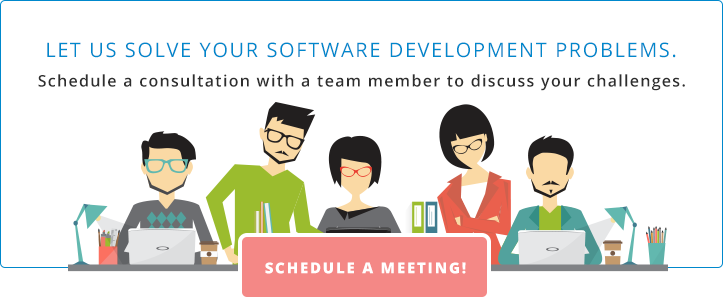Victor Conesa is Product Manager at Justinmind, where he uses his business, tech and UX experience to refine and promote Justinmind's interactive prototyping tool.
You started out at JUSTINMIND as Product Manager in 2004. What aspect of developing appealed to you back then, that spurred you getting into the field?
 What set everything off? On one hand, being a manager appealed to me because you can bring a team together, ensure each individual plays to their skill set and then let them sail solo. That's what a good manager does, they allow every team member to give their best and thereby create the best possible outcome; likewise a bad manager will create bad outcomes, no matter how good their team is on an individual level. Being a good manager isn't about giving orders, it's about giving people resources and space and guiding them.
What set everything off? On one hand, being a manager appealed to me because you can bring a team together, ensure each individual plays to their skill set and then let them sail solo. That's what a good manager does, they allow every team member to give their best and thereby create the best possible outcome; likewise a bad manager will create bad outcomes, no matter how good their team is on an individual level. Being a good manager isn't about giving orders, it's about giving people resources and space and guiding them.
And as far as getting into software is concerned, it interested me because, in this industry, you get to build something from the ground up. When I was younger I considered a career in architecture, mainly for the same reason - the idea of creating something from nothing is compelling.
You also took over as Vice President of Product Development in 2009. What had you learned in those 5 years that pushed you in that direction? How is being a product developer different than being a product manager?
In the 5 intervening years I learned how to intuit the most important activity for the product in each moment - to keep an eye on the competition and business strategy, as well as on everyday user-centric stuff. That was an important change - starting to think about the strategic needs of the business. In fact, that's been the main difference between Product Manager and VP of Product Development for me: in the former you direct the team through day-to-day things, looking more at the user level; in Product Development you have to be more strategic and think about what's best for the business. You're involved completely in the direction and the health of the business, you're not just along for the ride.
For those who've never heard the term, can you briefly describe what wireframing is, in regards to web development?
The web development process is full of terms that can get a little mixed-up, at times, so I'll try to be as clear as possible. Wireframing is the act (and art!) of building a wireframe, a static representation of your eventual webpage or app. Wireframes tend to be low-fidelity, i.e. to bear only a general resemblance to the final product, acting as a skeletal map or frame for designers and developers to work with.
You can use wireframes to map out and test core functionality and navigation flows, content priority and element hierarchy. Wireframes are generally used earlier rather than later in the software development lifecycle, before moving on to a high-fidelity interactive prototype.
The great thing about wireframes is that they're quick to create and iterate upon, and allow you to focus on the big picture.
At a time when it's easier than ever for someone to launch a website and start a business overnight, what are some of the main benefits of having an established digital business strategy in place, before even beginning to build a website?
While you're right that launching a website and online business is now easier than ever in theory, the importance of having a strong digital strategy has increased in step with that. E-commerce and digital enterprise is hugely competitive - you can't just cross your fingers and hope for the best. A good digital business strategy is characterized by the incorporation of business models and processes that embrace and new digital and disruptive technologies. The main benefits of having a digital business strategy in place are multifarious: it promotes agility and efficiency, increases ROI and drives internal innovation. I would say that prototyping a digital solution helps you to define and refine your digital business strategy before actually rolling out your final product.
Likewise, can you talk a bit about what prototyping is, and some of its greatest strengths?
If we think about software development in linear terms for a moment (although of course it's more cyclical in reality), prototyping would be the next step beyond wireframing. A prototype is a mid-to-high fidelity model of your final website's user interface (UI). A prototype will be more detailed in terms of design, and is interactive: you can demonstrate and validate the total functionality of the design with events, variables, animations and advanced interactions.
Its strengths lie in the fact you can do user testing with real users on real devices, collaborate with colleagues on something tangible, and present your ideas faithfully to potential clients or stakeholders. Plus there's nothing like being able to see your final product in all its functional and visual glory without writing a line of code!
At JUSTINMIND, you describe your work as a "user-centered design". How do you tell what a user's needs are? How do those insights influence the design process?
Figuring out user requirements - the user needs that should be built into functional and non-functional requirements - usually falls within the remit of the business analyst or the user experience professional on a project. Eliciting user requirements can be done in several ways - workshops, interviews, user testing, contextual observation etc - but the key premise is that the user voice has to be audible. An interactive prototype can be really useful for things like observation, when you watch how a typical user interacts with your product on a device.
The user requirements you collect are added to the wider requirements (these can all be kept in version histories in a prototyping tool) and will impact on future prototype iterations and, of course, your final product.
You also mention prototyping working in conjunction with both the design as well as the content aspect of a product or service. How can wireframing even help establish a content strategy? Why might a business owner, developer or designer decide to pursue that avenue?
Interesting question! Wireframing and prototyping can be pivotal in devising a winning content strategy. Firstly, content-first design should be introduced during the design-prototyping stage of your web project: try composing content first and designing around it, you'll find that it streamlines scaling, communication and design harmony. Prioritizing content can help you define white space, layout and brand identity. Of course, this approach isn't right for every product - in our recent Justinmind website redesign for example, design had the final say at certain moments - but if a design/development team decides to pursue this avenue it can produce interesting results.
Theoretically, how much time, money, and resources can wireframing and prototyping save a small-to-mid-sized business?
Firstly, it's worthwhile pointing out that the average IT project takes 230% longer to complete that originally planned, and costs 178% more than expected. These kind of stats can be really daunting for a small or mid-size business about to embark on digital transformation or a software project.
Wireframing and prototyping can reduce risks in several ways:
- Estimates for timeframe and cost are up to 50% more accurate
- Need for clarification by the development team can go down by close to 80%
- Late-stage bug fixes are less frequent and less serious
- User testing can go hand in glove with requirements definition, incorporating user validation and reducing the need for coded reworks
- An SDLC that incorporates prototypes generally produces final systems of greater clarity and less code
- Prototypes and in-built requirements take less time and effort to produce than text-based requirements docs do
You also wrote a post recently about bridging the gap between business and IT with prototyping. How does prototyping help bridge that gap, and what advantages does that bring?
The thing is, on many projects everyone is invested in the final product and they all have different ideas about final outcomes and ways to get there. Things can get heated. Prototyping is a good way to align both the needs and the desires of the business and IT teams by validating business requirements and design decisions in a tangible manner. It also helps improve communication between teams, because everyone has access to the prototypes and the requirements in the same tool at the same time, wherever they are. And you can link visibly comments to features and functions, so there's less room for confusion. In the end, you validate and iterate with everyone on board.
Considering the increasing prevalence of mobile technology and Agile programming, how important will prototyping be for companies looking to outsource their UX development?
Building products with outsourced developers can be a challenge; cases arise where coded software have to be entirely rewritten thanks to bad management or worse communication. But if you communicate with external teams through a prototype, or even collaborate with them within a prototyping tool, you remove the majority of the possibilities for confusion. Everyone can see comments and changes in real-time, wherever they are. This way of working promotes agile iteration cycles and really just shores up open communication between all kinds of teams.
Want to learn more about how to streamline your design process? Contact AndPlus and get insightful design news and insights delivered straight to your inbox.

















